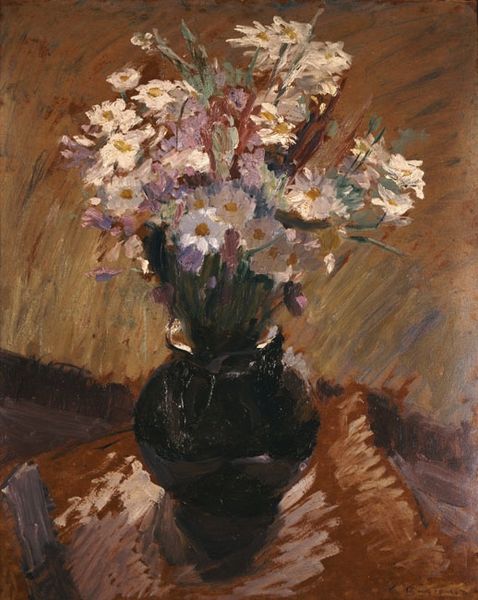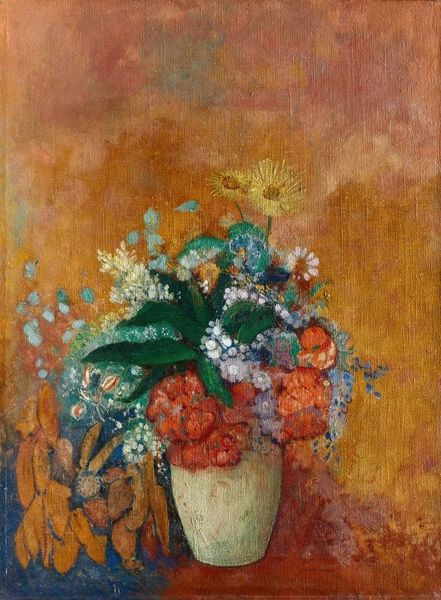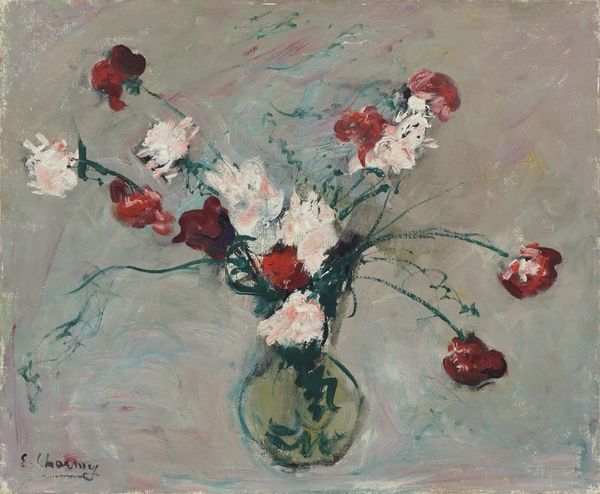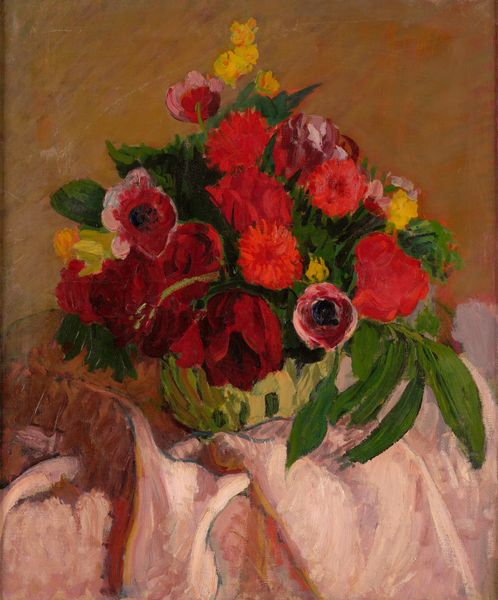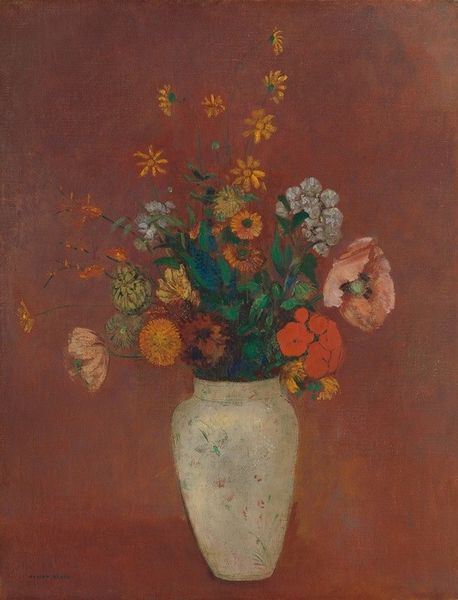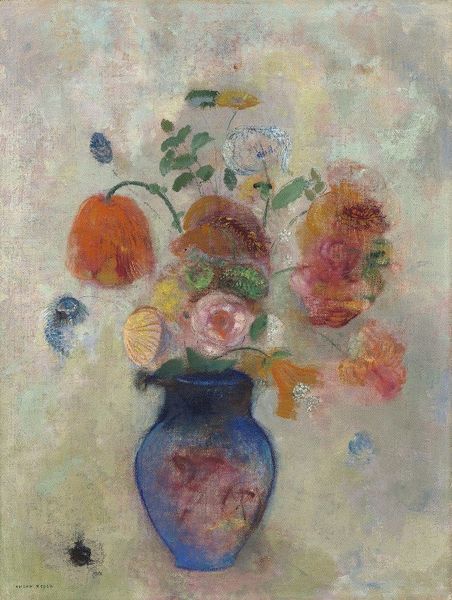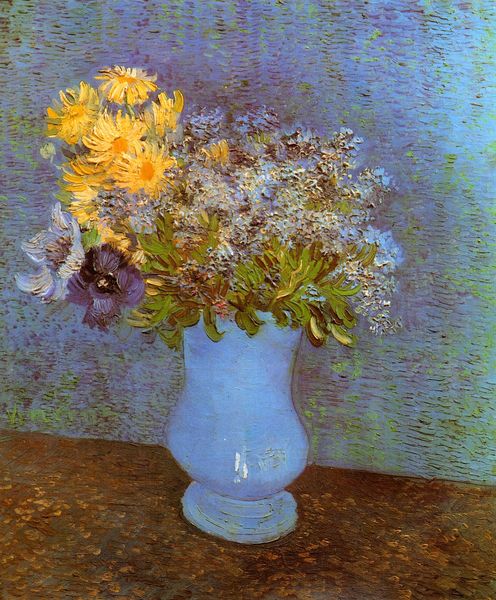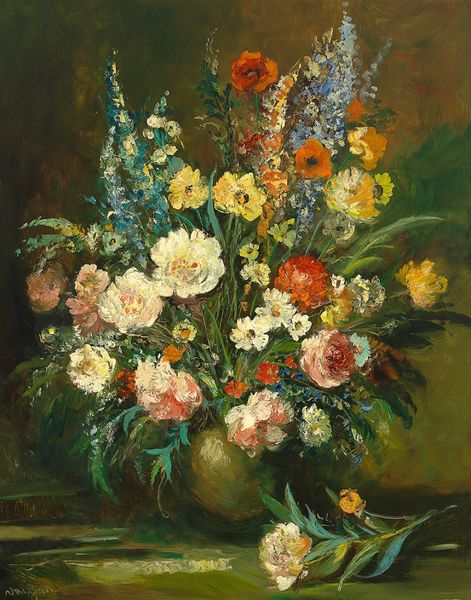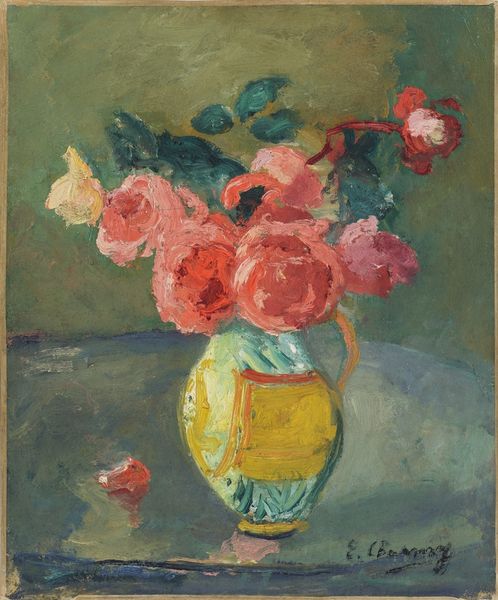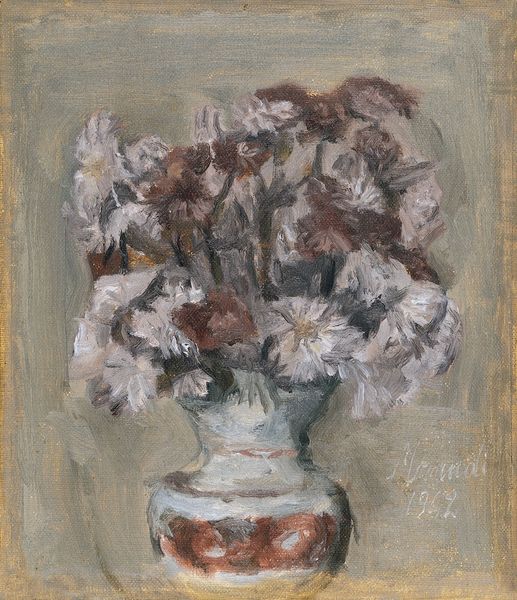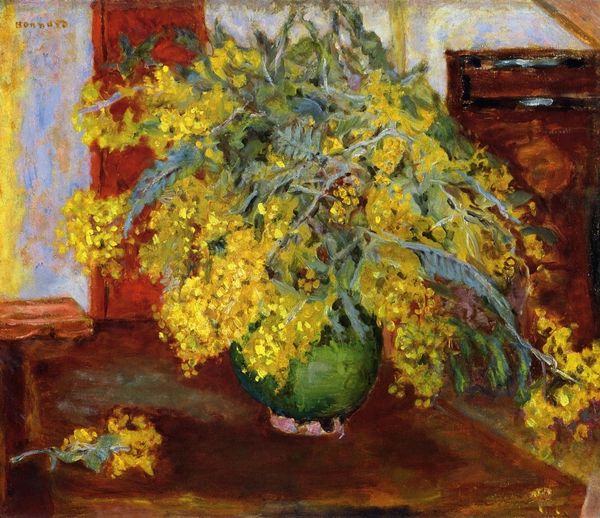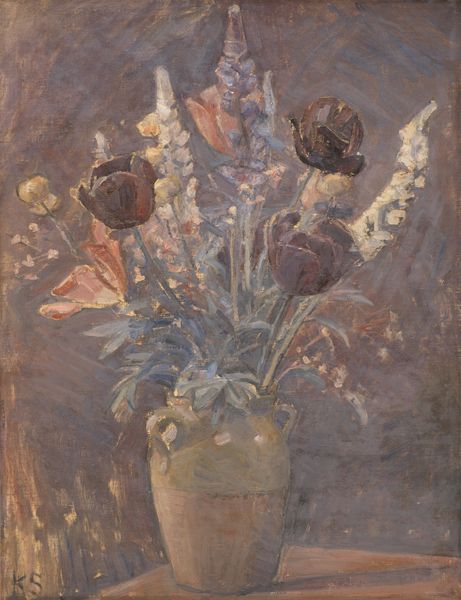
painting, plein-air, oil-paint, impasto
#
still-life
#
painting
#
plein-air
#
oil-paint
#
oil painting
#
impasto
Copyright: Public domain
Editor: Here we have Andres de Santa Maria’s "Crisantemos," painted in 1917. The oil paint is built up with a lovely, thick impasto, giving it a very tangible quality. What stands out to me is the directness in the application of paint – the mark-making feels quite raw. How do you see this work? Curator: The tangible quality you mentioned speaks volumes. Look at how the materials themselves—oil paint applied in thick daubs—become central to the experience. This wasn’t just about representation, but about emphasizing the physicality of paint as a commodity, a material resource transformed by labor. Think about where those pigments came from, who ground them, who produced the canvas. Editor: That's fascinating. I was focused on the subject, the chrysanthemums, and now I'm thinking about all that unseen labor. But why is that important? Curator: It shifts our attention away from the mere aesthetic appreciation towards a consideration of the economic and social factors that made this painting possible. This isn't just a pretty picture of flowers; it's evidence of a complex system of production and consumption. And Santa Maria is also deliberately flattening hierarchies by bringing the material presence of paint into conversation with traditional still life. He’s making the invisible visible, wouldn't you agree? Editor: I do see what you mean! It changes my whole perspective. Instead of just seeing beauty, I'm now wondering about the historical and economic circumstances of its creation. Curator: Precisely! And how the value of the object might shift based on that knowledge. Editor: Thanks, I never considered that when looking at still life. I’ll definitely view art with a more material lens now!
Comments
No comments
Be the first to comment and join the conversation on the ultimate creative platform.
